Aloe arborescens
Candelabra Plant/Aloe, Octopus Plant/Aloe, Torch Plant/Aloe, Kranz (Krantz, Krans) Aloe, Baumartige (Mountain Bush) Aloe, Kidachi Aloe, Oldenland's Bush Aloe, Sword Aloe, Woody Aloe, Tree Aloe, Babosa
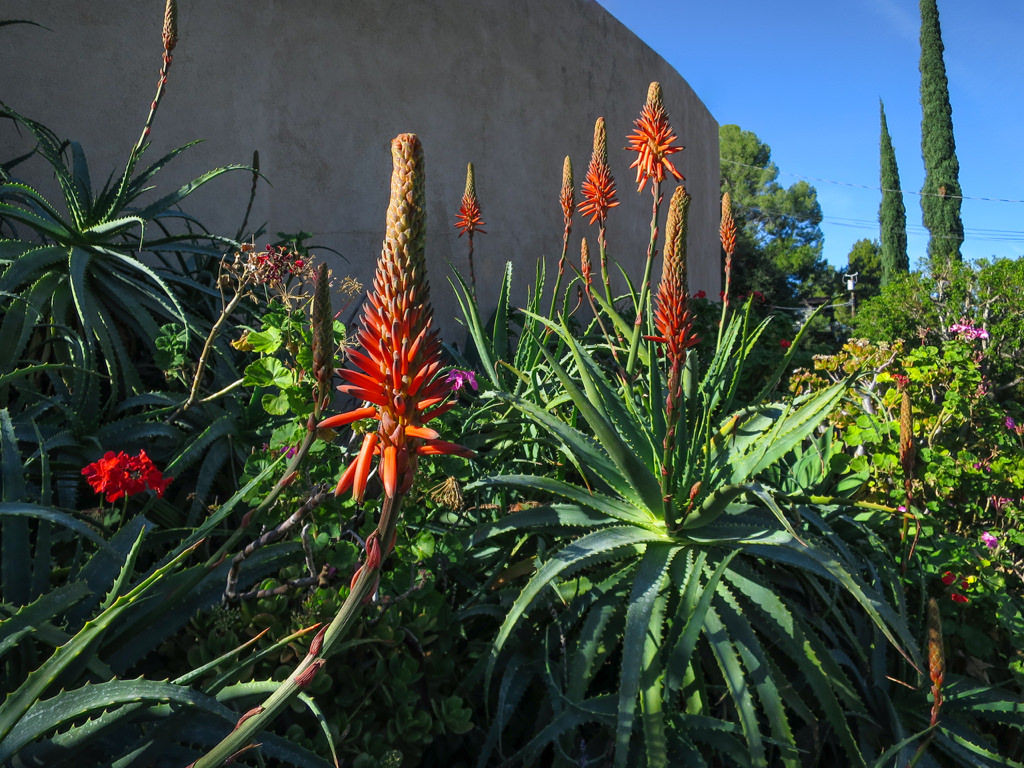
Originally from South Africa, Aloe naturally occurs in Malawi, Mozambique, Zimbabwe, Madagascar, and the Arabian Peninsula. In the Arabic world, ‘‘Alloeh’’ means “shining bitter substance” that has been revered for its medicinal qualities for many centuries.
At first, Aloe’s valuable nutrients and phytochemicals have been used primarily as topical skin-healing and oral therapeutic agents. In the present time, the plant is additionally used in the treatment of gastrointestinal disorders, immune system deficiencies, as an anti-inflammatory and anti-microbial agent, in antidiabetic activities, and more. The use of Aloe’s gel and latex obtained from the plant’s fleshy leaves is vitamin and mineral-rich, benefiting the commercial cosmetic and food industry in forming a base for jellies, creams, drinks, ointments, lotions, and so on.
The Aloe genus consists of about 140 species, most of which thrive in arid climates of full sun and infrequent, deep watering. The succulent plant is perennial with shallow roots, and when growing closely, Aloe forms a root system that increases soil binding and stabilization. Although the plant prefers well-drained sandy soil, it can be cultivated in a wide range of soils.
Aloe arborescens blooms from December to February, putting on a display of showy bright-vermillion or yellow clusters of flowers. This plant enjoys free-draining soil and tolerates shade. Because of its statuesque form and imposing height of ten feet, this plant makes a captivating element in any landscaping.
Quick facts
Height: 6 to 10 feet
Width: 6 to 8 feet
Leaves: evergreen
Soil: loam, sand, well drained
pH: acid, alkaline, neutral
Exposure: full sun or light shade
Water: low water
Tolerance: drought tolerant, xeriscapic
Fire Benefit: excellent fire-retardant succulent for wildfire-prone areas
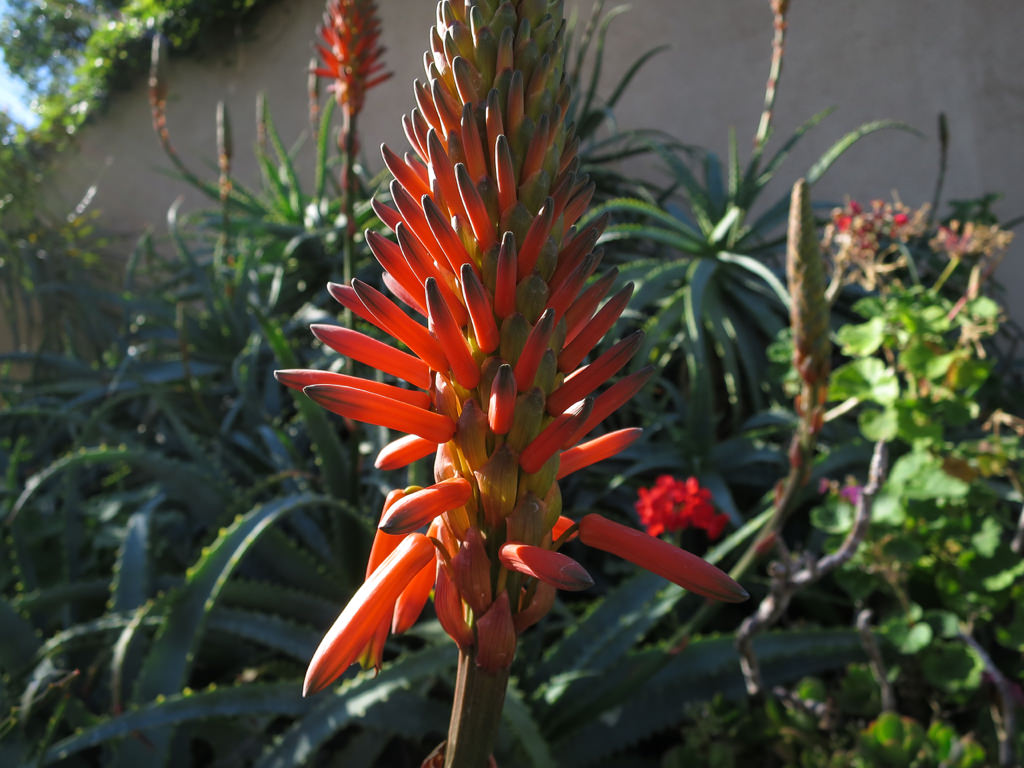
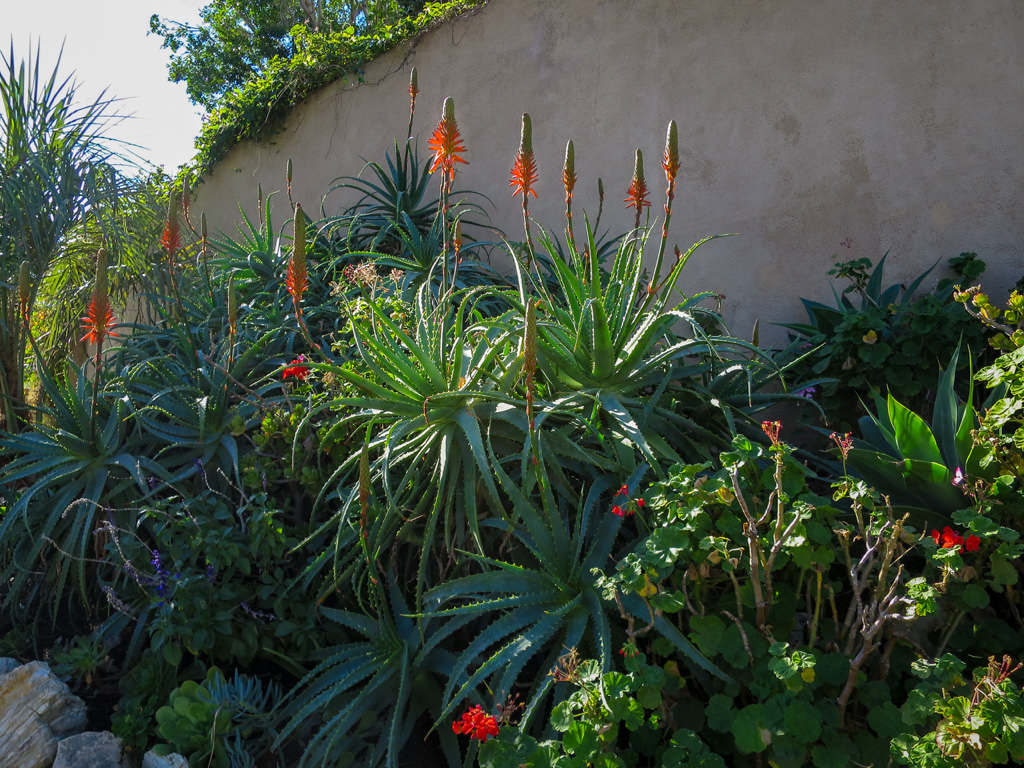
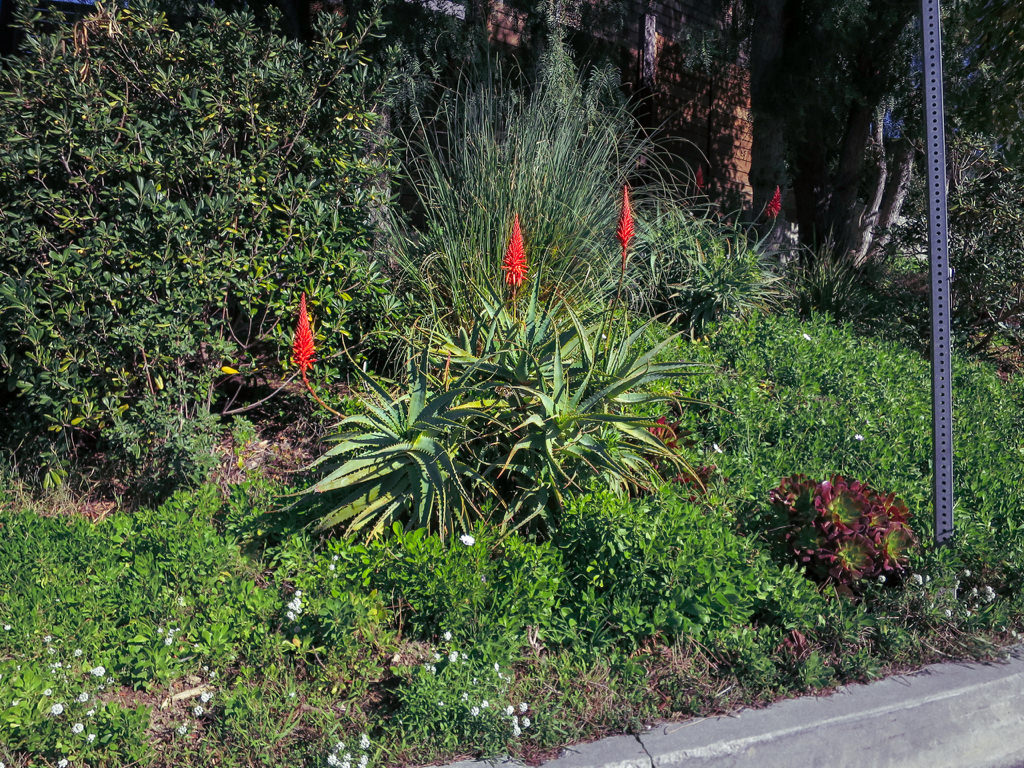
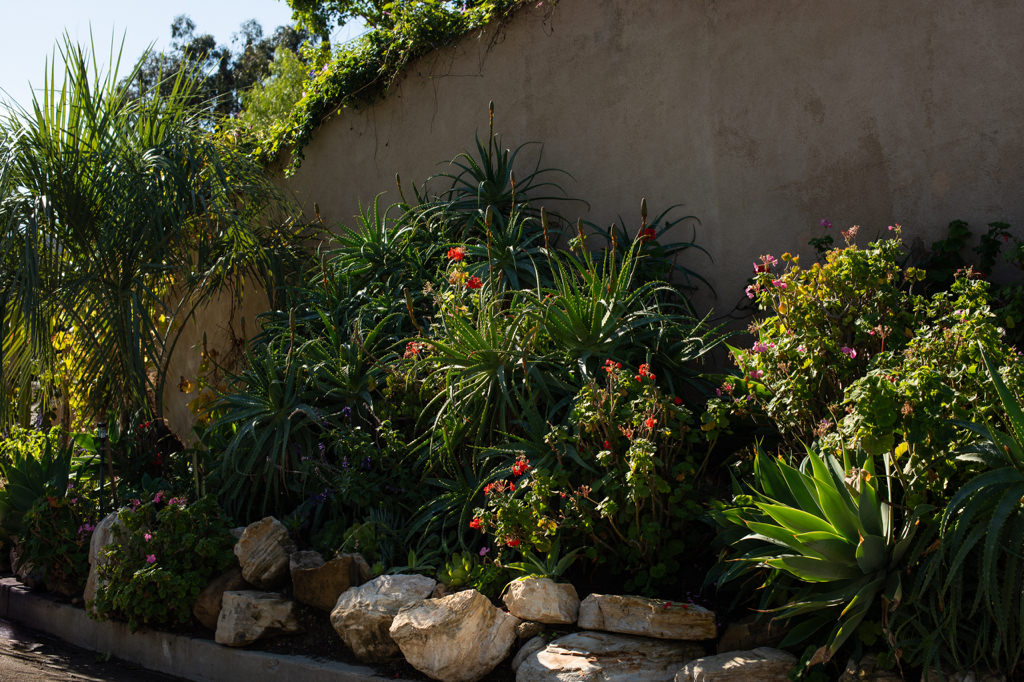
References
Cambridge University Botanic Garden. (n.d.). Aloe arborescens. https://www.botanic.cam.ac.uk/the-garden/plant-list/aloe-arborescens/
Gardenia. (n.d.). Aloe arborescens (Torch Aloe). https://www.gardenia.net/plant/aloe-arborescens-torch-aloe
Kusch, M. (n.d.). Gardening for Pollinators: What to Plant and Why. University of California Davis, Arboretum and Public Garden. https://arboretum.ucdavis.edu/sites/g/files/dgvnsk1546/files/inline-files/why-garden-for-pollinators.pdf
National Library of Medicine, National Center for Biotechnology Information. (2018, September 19). Aloe Genus Plants: From Farm to Food Applications and Phytopharmacotherapy. International Journal of Molecular Sciences. doi:10.3390/ijms19092843. https://www.ncbi.nlm.nih.gov/pmc/articles/PMC6163315/
Plants Database. (n.d.). Krantz Aloe (Aloe arborescens). https://garden.org/plants/view/112069/Krantz-Aloe-Aloe-arborescens/
PlantNet. (n.d.). Aloe arborescens. https://identify.plantnet.org/k-world-flora/species/Aloe%20arborescens%20Mill./data
Sunset Publishing Corporation. (1996). Western Garden Book (p. 147). Menlo Park, CA: Sunset Books and Sunset Magazine.
Top Tropicals. (n.d.). Aloe arborescens. https://toptropicals.com/catalog/uid/aloe_arborescens.htm